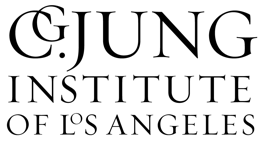
Book Talk and Signing with Christi Taylor-Jones, author of “Touched by Suicide”
The Schizophrenia Complex: Feeling Our Way To a New Attitude
Deep Blues: Human Soundscapes for the Archetypal Journey
POSTPONED: First North American Conference on Infant, Child and Adolescent Jungian Analysis
Book Talk and Signing with Christi Taylor-Jones, author of “Touched by Suicide”
The Schizophrenia Complex: Feeling Our Way To a New Attitude
Deep Blues: Human Soundscapes for the Archetypal Journey
POSTPONED: First North American Conference on Infant, Child and Adolescent Jungian Analysis
« All Events « All Public Programs « All Training Programs
Clinician’s Program (2024-2025): Active Imagination
June 14 @ 9:00 am - 4:00 pm
Prepaid Cost: $200.00Event Navigation
Saturday, June 14, 2025
Active Imagination
Presented by Marion Anderson, Ph.D.
“Experience in analytical psychology has amply shown that conscious and unconscious contents seldom agree to their content and their tendencies.” – C.G. Jung CW 8 §132
Jung developed the tool of active imagination as a means of helping patients contact and work with their unconscious material through mediums such as writing, drawing, painting, and movement. In this way, patients were encouraged to develop active communication between their ego and the unconscious through symbolic expression. We will examine the history and roots of this practice and illustrate how this technique can be utilized in clinical practice. Jung emphasized that clients could only go as far as their therapists have reached in their own personal experience with this method. If time allows, participants can experience working with this technique directly.
Learning Objectives:
- Describe what is meant by active imagination, contrasting it with imaginative techniques.
- Describe how Jung used active imagination with his patients.
- Give an example of when it would be therapeutically appropriate to incorporate active imagination in the course of treatment.
- Give an example of when utilizing active imagination would be counter-indicated.
- Describe how bringing unconscious images into consciousness can be used to strengthen ego development.
- Describe 4 forms of active imagination in clinical practice.
Marion Anderson, Ph.D., is a clinical psychologist and Jungian analyst (IAAP) at the C.G. Jung Institute of Los Angeles where she teaches in the analytic training program. She works in person and online in her private practice in Santa Monica with adults who suffer from anxiety, depression, trauma, cultural adaptation, and major life transitions. Dr. Anderson is a certified sandplay therapist and teacher (STA/ISST) and a founding member of the Brazilian Sandplay Society IBTsandplay. She is certified in the Jungian method of Painting Inner Images (Maltherapie) in Germany and offers workshops in this modality. She presented and published nationally and internationally and speaks German, English, and Portuguese.
Continuing Education:
Psychologists/LCSWs/MFTs/LPCCs: The C.G. Jung Institute of Los Angeles is approved by the American Psychological Association to sponsor continuing education for psychologists. The C.G. Jung Institute of Los Angeles maintains responsibility for this program and its content.
Nurses: The C.G. Jung Institute of Los Angeles is an accredited provider approved by the California Board of Registered Nursing. Registered Nurses may claim only the actual number of hours spent in the educational activity for credit.
